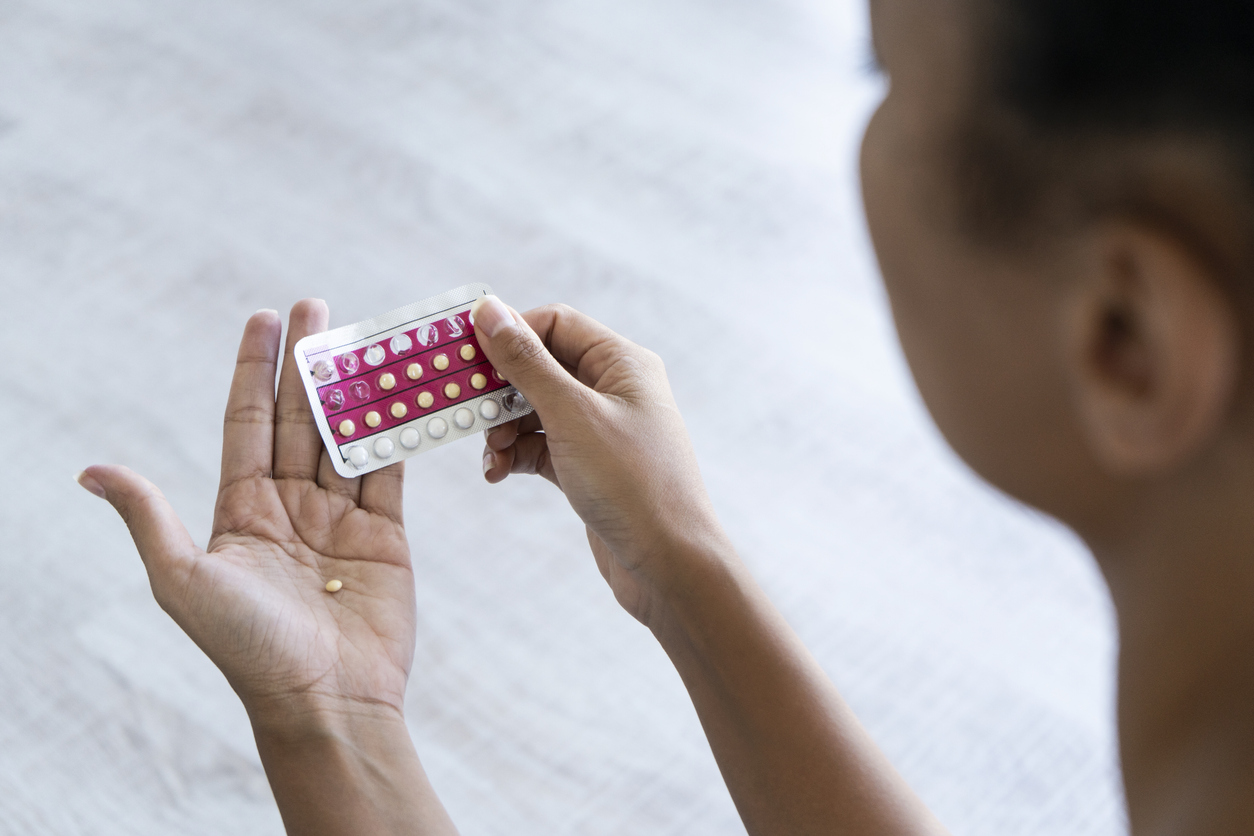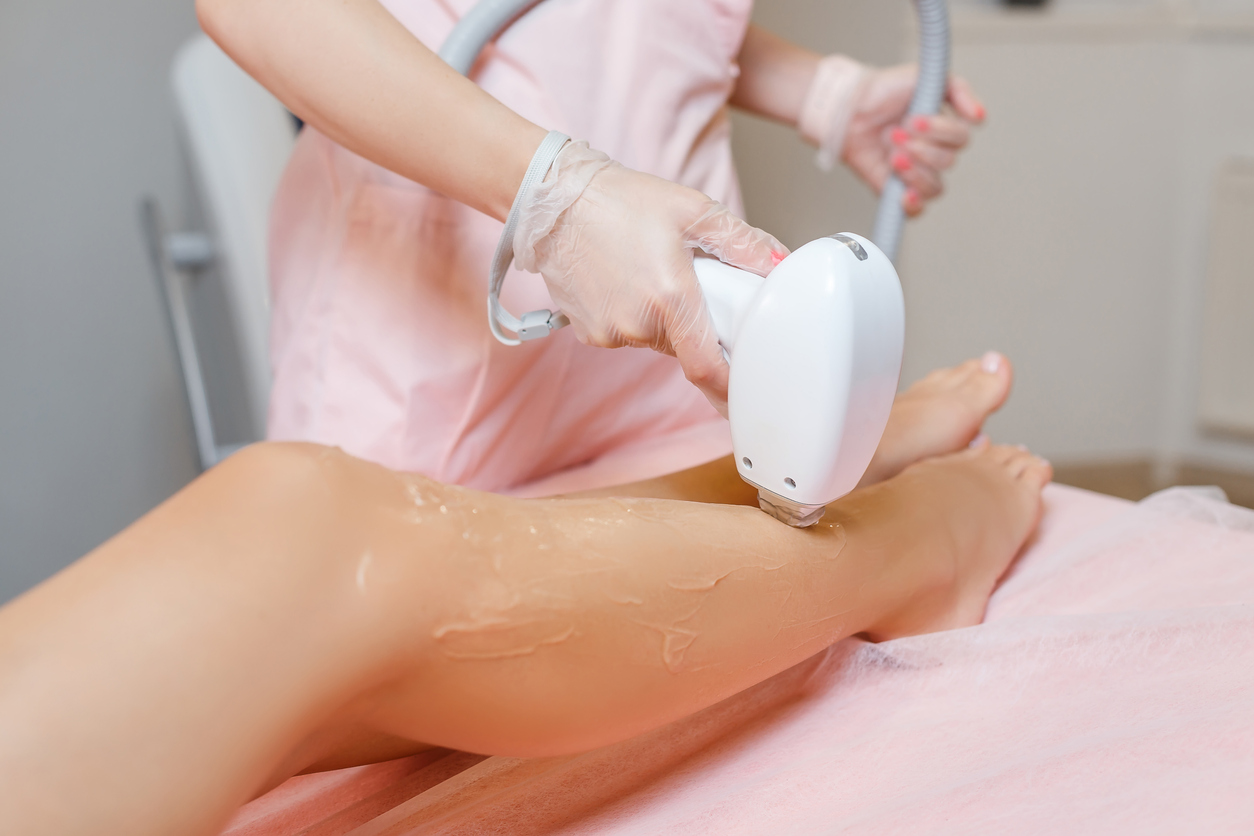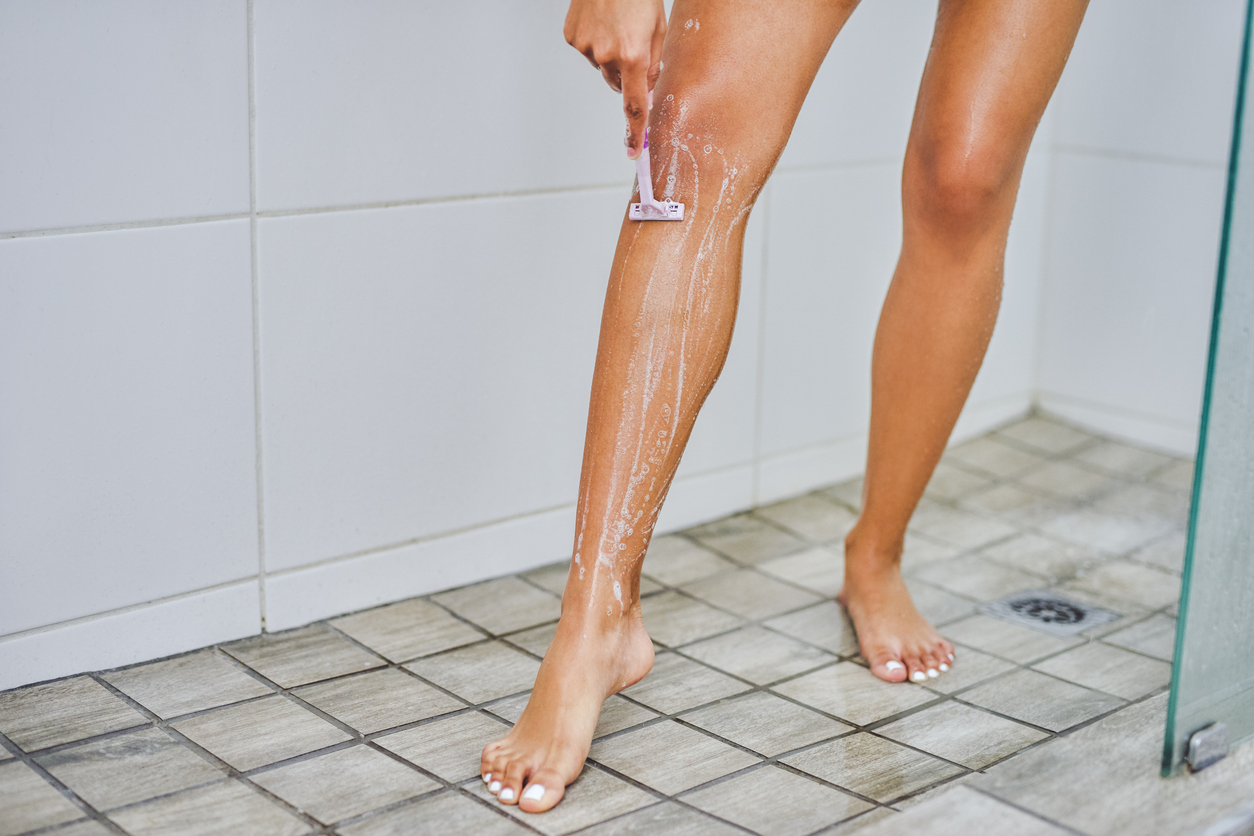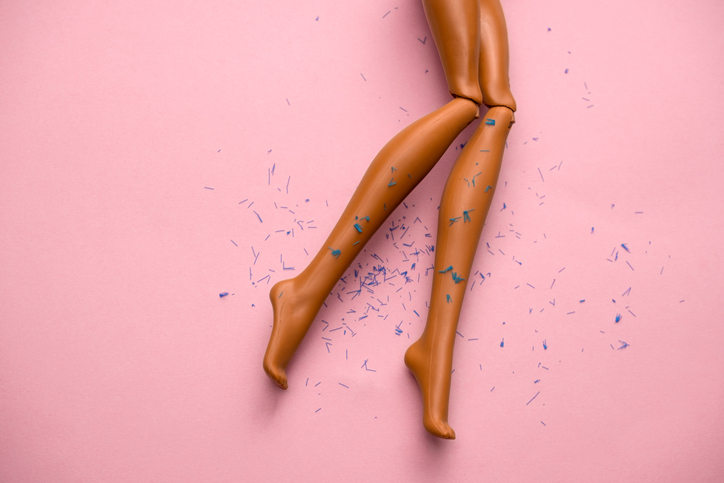It’s completely normal for women to have hair on their bodies and faces. But with so many media images, artworks and text-book drawings showing women who are hair-free, you’d be forgiven for thinking it isn’t. And it may be distressing if you feel like you have more hair than what’s generally expected.
The focus on hair-free women can make it hard to know what’s normal and what isn’t when it comes to body hair. But if you do have hair growth that’s beyond the usual, you may have a condition called hirsutism. This is when you have excessive, thick, dark hair on parts of your body where it wouldn’t normally appear.
“It can be emotionally challenging, but you’re not alone,” explains Dr Ann Nainan, Clinical Content Reviewer at Healthily. “About 5% to 10% of women aged 15 to 49 have hirsutism. And the good news is that there are lots of treatment options.”
So keep reading to find out what’s ‘normal’ when it comes to face and body hair, why you might have more than other people, and what you – and your doctor – can do about it.
What’s a normal amount of face and body hair for women?
What’s considered ‘normal’ when it comes to hair can be hard to define, and can vary from person to person. This is due to factors such as:
- race, ethnicity and cultural beliefs – hair growth on your face and body can differ depending on your ethnicity and race. For example, in many parts of the world – including the Indian subcontinent, Middle East and Mediterranean – it’s very common to have lots of dark facial and body hair. And what’s considered normal varies
- personal preference – how much hair is normal for you can be completely different for someone else. If your friend has very light, fine hair on her arms, but you have dark, thick hair on yours, you might worry that you’re not normal. But that’s not necessarily true – often, it’s simply that we’re just all different
- expectations – in many countries, including the US and UK, it’s normal to remove body hair, and has been for a long time. This makes it difficult to know how much hair would be ‘normal’ or ‘average’ today, if no one removed any hair
Symptoms of hirsutism: when is hair considered excessive?
Remember, everyone has fine hairs all over their face and body – it’s everywhere except our lips, the palms of our hands and the soles of our feet
But it’s possible that there’s a medical reason behind your hair growth if:
- you have thick, dark hair on parts of your body where your hair is expected to be thin and fine
- the hair is in areas where men usually have more hair than women – such as your face, chest, tummy, lower back and buttocks
“Although they aren’t symptoms of hirsutism, feelings of embarrassment, self-consciousness or low mood can happen as a result of excess facial or body hair,” says Dr Nainan. “And this may have a knock-on effect on your wellbeing, confidence and love life.”
What causes excessive hair growth?
Hirsutism is linked to your levels of ‘male’ hormones called androgens:
- all women make androgens – they’re involved in helping with your thinking (cognition), sex drive (libido) and keeping your bones healthy
- some women’s bodies make higher levels of androgens than others, while some are just more sensitive to androgens
- if your body starts to make more androgens and your hair follicles are sensitive to it, your hair can start to grow thicker and faster
It’s not always clear why your levels of androgens rise, and sometimes there’s no obvious cause of hirsutism. But possible factors include:
- polycystic ovary syndrome (PCOS) – this is the most common cause of hirsutism. It’s a condition that affects your ovaries and is linked to an imbalance of certain hormones, including androgens and insulin
- insulin resistance – this means your body has trouble controlling your blood sugar levels. To make up for this, your pancreas creates more insulin, which can then cause your ovaries to make too many androgens. It’s common in people with PCOS
- obesity – hirsutism is more common if you’re overweight. This is thought to be linked to insulin resistance, and the fact that higher levels of body fat can increase the production of androgens
- pregnancy – when you’re pregnant, your levels of androgens increase, especially during the third trimester. As well as having more hair than usual, you might notice acne or a deeper voice
- menopause – your hormones change during the menopause. While your oestrogen levels fall, your androgens stay the same, creating a different balance, which can lead to hirsutism. You may get dark facial hairs, particularly on your upper lip and chin
- health conditions that affect your hormones – in rare cases, a condition that affects your adrenal glands (such as Cushing’s syndrome or congenital adrenal hyperplasia) can cause your body to make too many androgens. A tumour that affects your adrenal glands, ovaries or pituitary gland or can also have this effect. Thyroid problems are another rare cause of hirsutism
- certain medications – medicines such as steroids and testosterone can cause hirsutism, because they cause hormonal changes. Other medications can also cause excessive hair growth as a side effect, including the immunosuppressant ciclosporin and the anti-seizure medicine phenytoin. In some cases this is thought to be because they cause a hormonal imbalance
Removing excess hair
As we’ve discussed above, what’s ‘normal’ when it comes to body hair is subjective, and varies from person to person. Ultimately, what you feel comfortable with depends on you.
Remember, if you don’t want to remove any body hair, that’s completely fine. And if you do want to get rid of some of – or all – your hair, that’s OK, too. It’s entirely up to you.
If you’re looking to remove hair, there are lots of ways to do it. Some are short-term solutions, such as shaving and waxing, while others offer longer-term results, such as laser hair removal and electrolysis.
Read more about hair removal methods, to help you decide which is best for you.

When to see a doctor
If you think you have more hair than you should, or your body hair is affecting you, it’s important to get help – so book an appointment with your doctor.
Talking to your doctor about excess hair growth may make you feel embarrassed. “Some women say they’re embarrassed about the examination, while others say they feel ‘vain’ for seeing a doctor about what seems like a beauty issue,” says Dr Ann Nainan. “But if it’s causing you worry and distress, it’s key that you talk to your doctor. Remember, we’re here to help you – and we’ve helped other women in the same situation. We can advise on how to find out what’s causing it, and the best treatments for you.”
It’s especially important to get medical advice about your body hair if you have other symptoms, as these may mean you have an underlying condition that needs treatment. So see a doctor if:
- your hair grows or gets thicker very suddenly
- you have problems with your menstrual cycle – such as absent or irregular periods
- you have acne
- you’re getting a milky discharge from your nipples
- your voice has got deeper
- you hands or feet are getting bigger
- you’ve noticed a rounding of your face, stretch marks, that you’re bruising easily or your arms or legs feel weak
- you think a medicine you’re taking could be causing hirsutism
How is hirsutism diagnosed?
Your doctor will usually diagnose hirsutism – and try to find what’s causing it – by doing some of the following checks and tests.
Talking to you
They’ll ask you about your symptoms, medical history and any medications you’re taking.
Checking your hair growth
They may check your hair growth using a scoring system called the Ferriman-Gallwey visual scale. This involves looking at 9 areas of your body and scoring the level of hair in each area, ranging from 0 – meaning ‘no hair’ – to 4 – meaning ‘extensive hair growth’.
A total score of 8 or more is likely to lead to a diagnosis of hirsutism if you’re a black or white woman aged 15 to 49.
But as we mentioned before, what’s considered normal can depend on your race and ethnicity. For example, a lower score applies for some Asian and South American populations, while it’s higher in some Mediterranean, Middle Eastern and Hispanic populations.
This means your doctor may ask about your background, to help you get the right diagnosis.
Checking for other physical signs
Other symptoms may suggest the cause of your excessive hair growth. These include:
- acne, balding, a reduction in breast size, a deeper voice, large muscles or an enlarged clitoris – these can be signs of increased androgens
- thin skin, stretch marks, bruising or swelling of your face – these can be signs of Cushing’s syndrome
- milky discharge from your nipples – this could mean you have high levels of the hormone prolactin in your blood, which can lead to higher androgens
- dark, dry patches of skin (acanthosis nigricans) – this can suggest insulin resistance
Tests and scans
Your doctor may also want to do some tests to look for the cause of your excess hair, which can include:
- blood tests – to check your hormone levels
- ultrasound scan of your ovaries – to check for signs of PCOS
- thyroid function tests – to check if you have a thyroid problem
- other scans, such as MRI or CT, to check your adrenal glands and look for rarer causes of hirsutism
Seeing a specialist
In some cases you might also need to see a specialist, especially if your doctor suspects 1 of the rarer causes of hirsutism.

How is hirsutism treated?
If you’re diagnosed with hirsutism, your doctor might suggest:
- losing weight – if you’re overweight, weight loss can help balance your hormone levels by reducing the amount of androgens your body makes
- eflornithine cream – this is a prescription cream that can slow down the growth of unwanted facial hair. It can take 6 to 8 weeks to work and isn’t permanent, but can be a good short-term option
- a contraceptive pill – this can help control your hormone levels, but it’s only suitable if you haven’t been through the menopause. Your doctor may recommend a combined pill that contains both oestrogen and ‘anti-androgenic’ progesterone, such as cyproterone, dienogest or drospirenone
- anti-androgen medication – these either lower your level of androgens, or stop them affecting your hair follicles. Spironolactone is the most common type. In some cases, 5-alphareductase inhibitors are used, but usually only if you’ve been through the menopause
- hormone replacement therapy (HRT) – if menopausal changes are causing your hirsutism, HRT can help restore your hormone balance, if it’s suitable for you
- insulin-lowering medication – if you have PCOS, insulin resistance or you’re overweight, you may be prescribed metformin or rosiglitazone, although their effectiveness isn’t as well-proven as other treatment options
- changing your medication – if medication is causing your hirsutism, talk to your doctor about whether an alternative might be suitable for you. If you’re taking steroids, you may be able to try to reduce your dose (but never do this without your doctor’s supervision). If you need to keep taking your medication, you might want to try hair-removal methods while you’re taking it
Watch this space: spearmint tea
There’s some limited evidence to suggest that drinking spearmint tea may help to slow down the rate of hair growth.
A small 2007 study asked women with hirsutism to drink spearmint tea twice a day for 5 days during the first half of their menstrual cycle (before ovulation). At the end of the study, there was a significant change in certain hormone levels, and some participants felt their symptoms had improved.
Participants in a similar 2010 study said their hirsutism had improved after drinking spearmint tea for 30 days, although there was no difference in their Ferriman-Gallwey scores before and after the trial.
Ultimately, more research is needed before we can know if spearmint tea could be a treatment for mild cases of hirsutism.
Your health questions answered
What is hypertrichosis?
“Hypertrichosis is a different and much rarer condition than hirsutism, when you have more hair than is normal for your age, sex and race. Unlike hirsutism, it can happen in men as well as women. And the hair can grow anywhere on your body, in small patches or all over (whereas with hirsutism, you tend to get the hair only in areas where men are usually more hairy). Hypertrichosis can be present at birth (congenital) or start later in life, when it can be caused by malnutrition or certain medications.”







